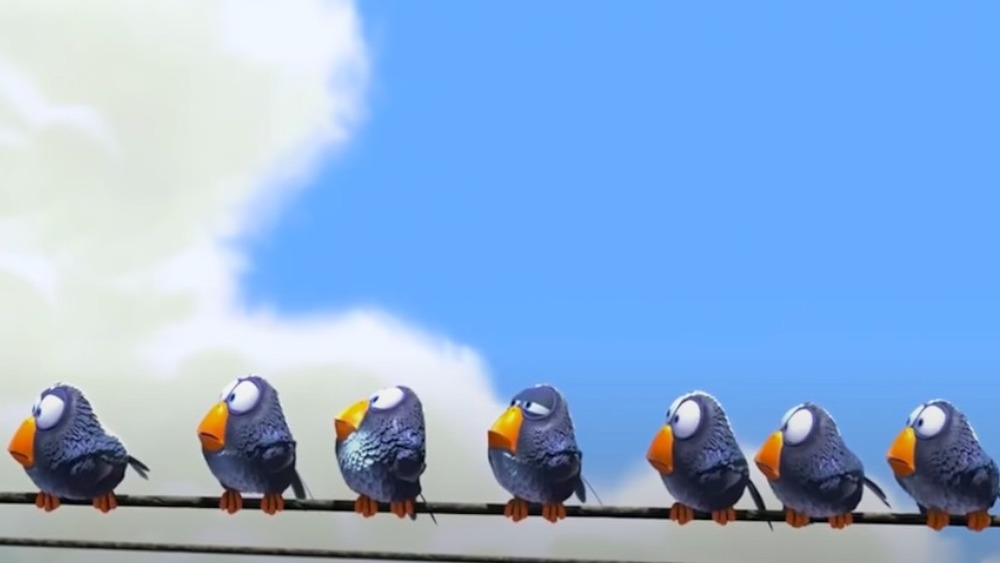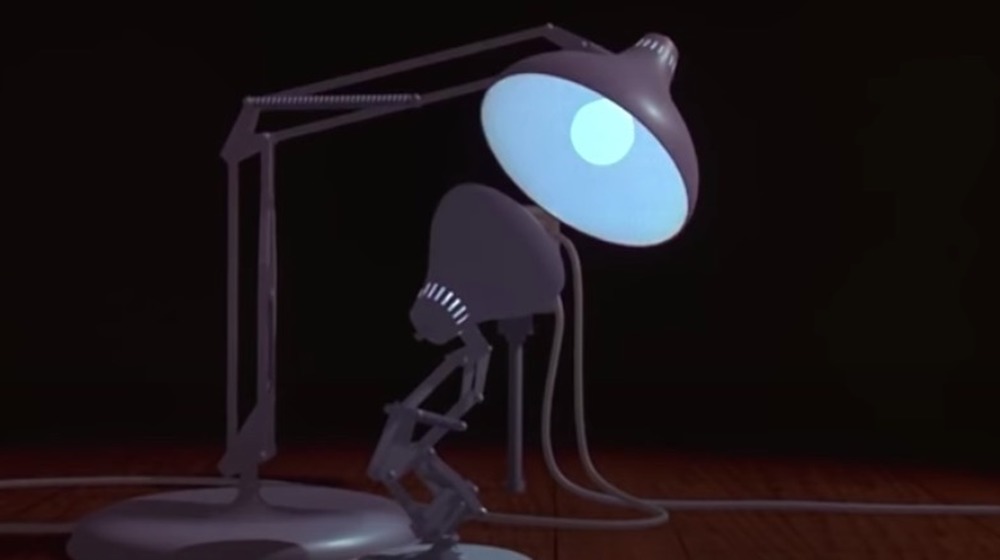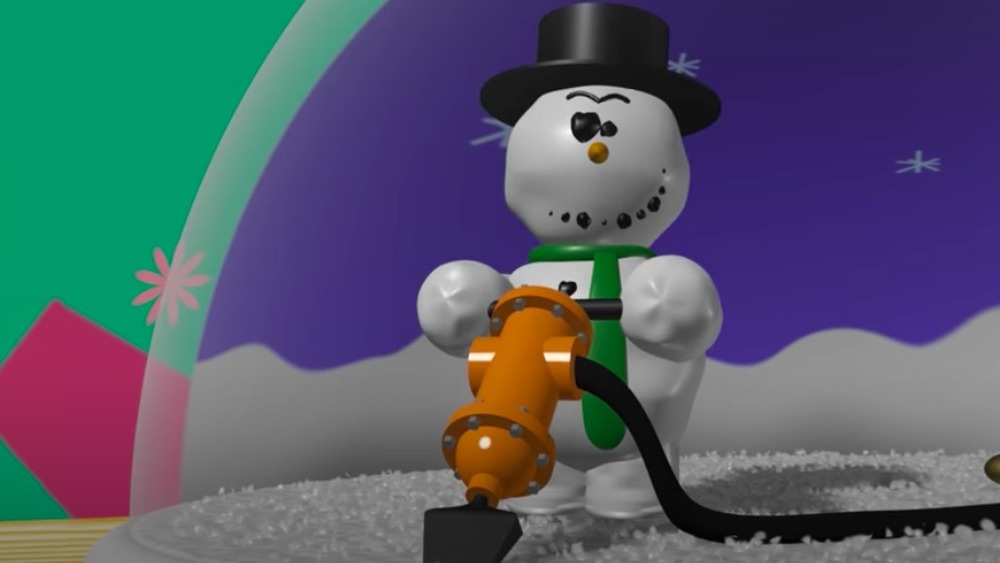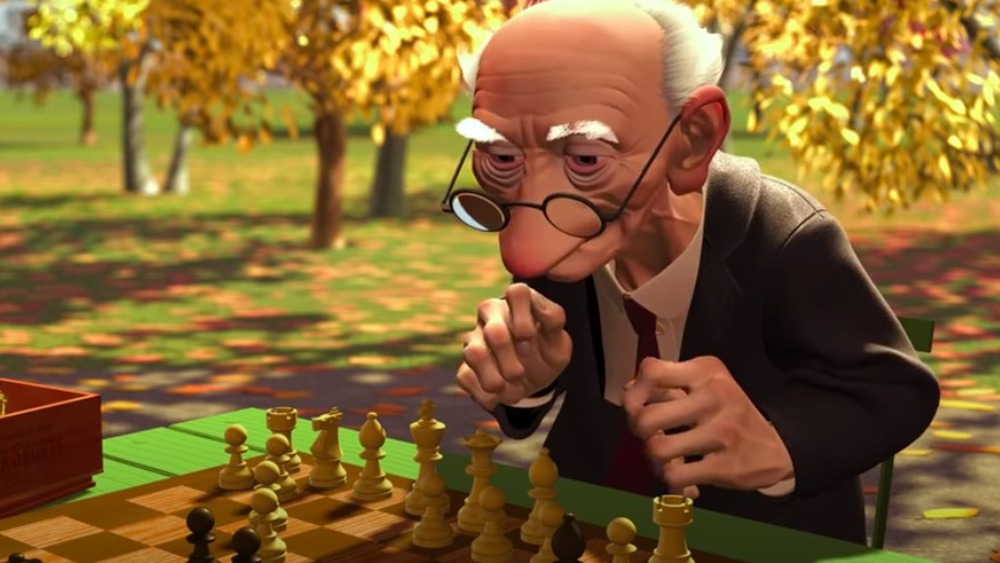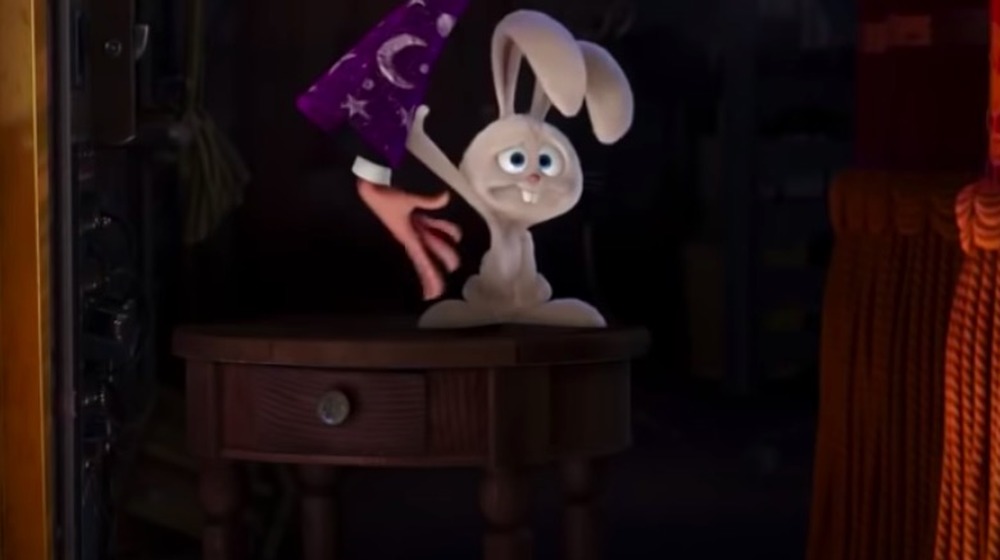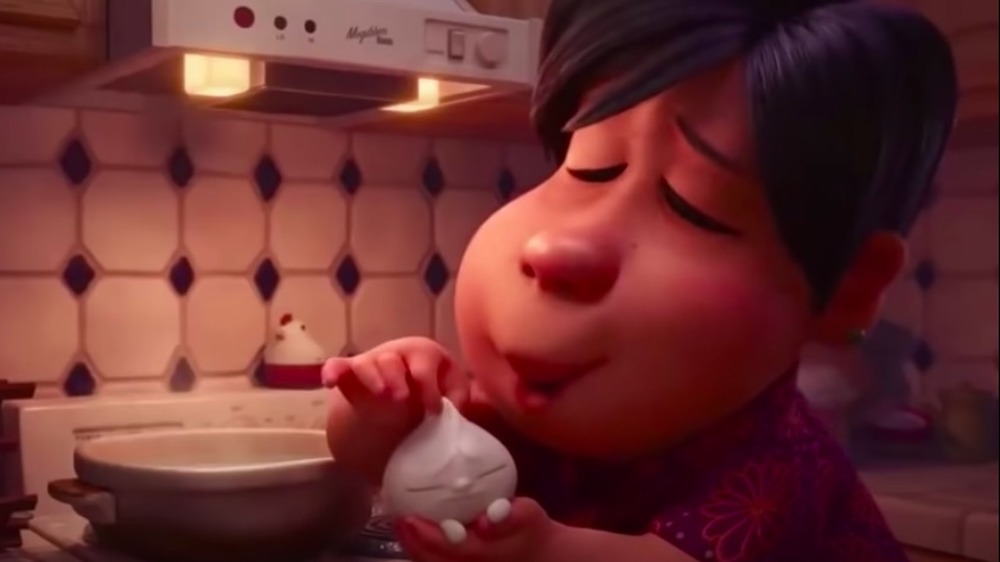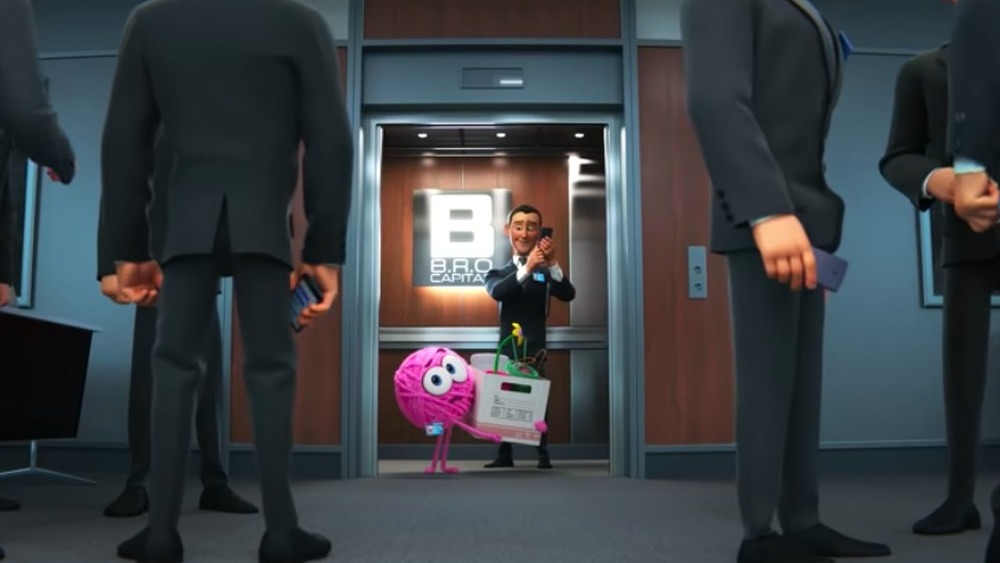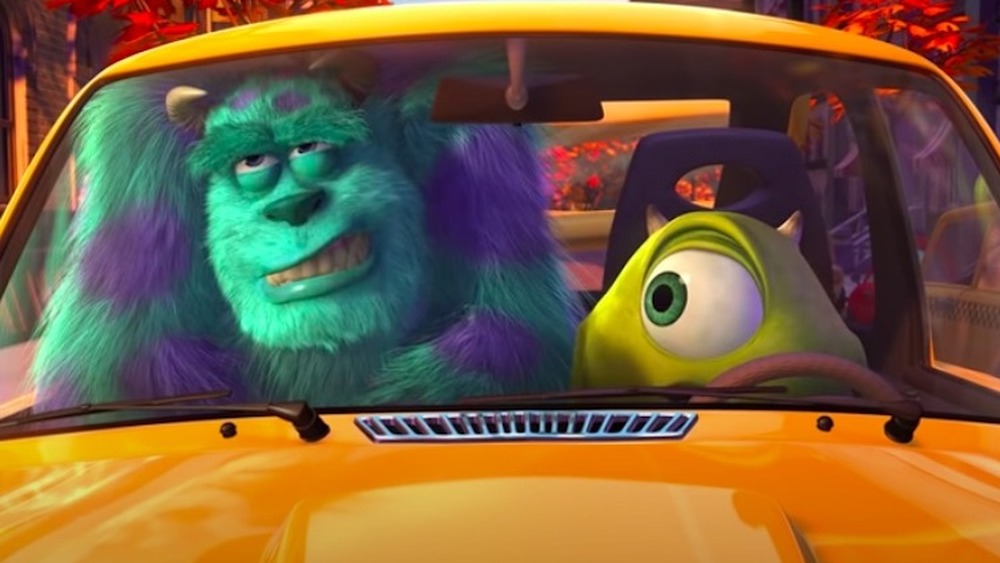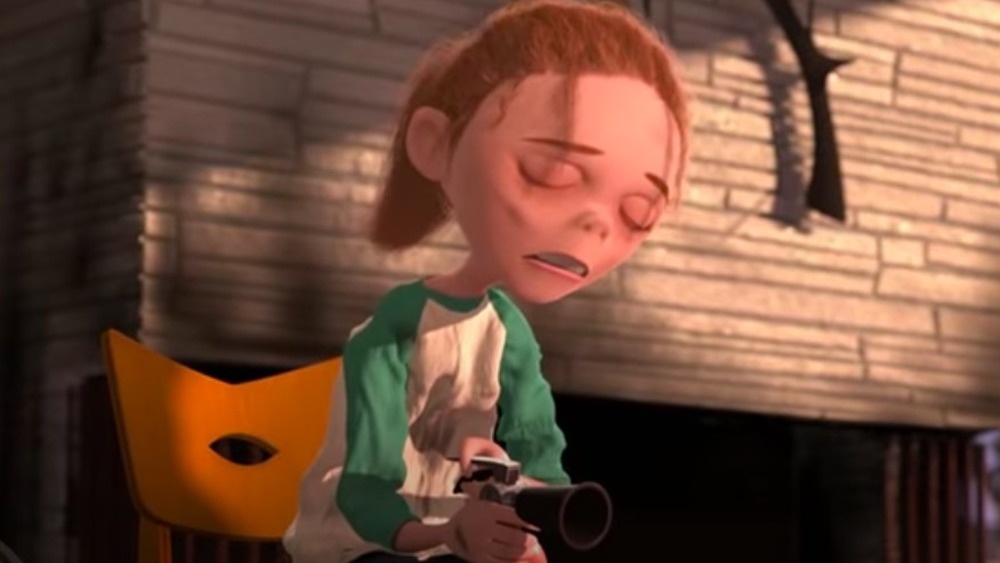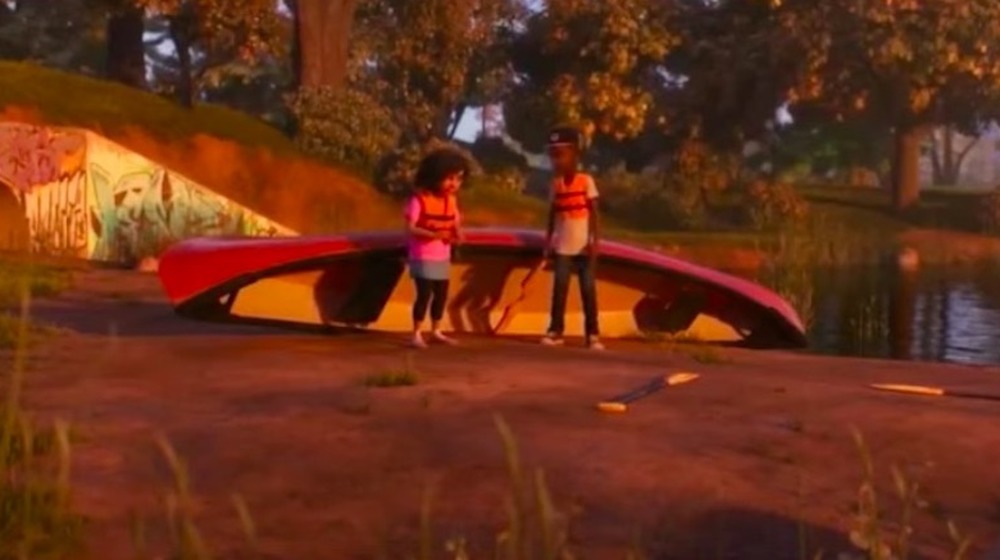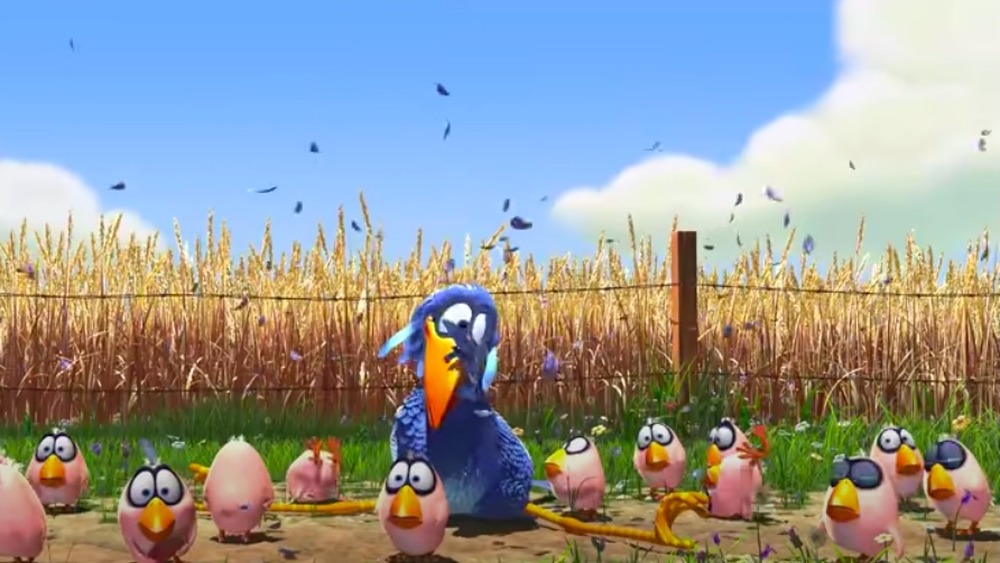The Best Pixar Shorts You Don't Want To Skip
Out of Pixar's 22 feature films, the majority of them are household names. From the Toy Story franchise to Ratatouille or Inside Out – the list of their hits goes on and on. But their successes don't end with their many feature-length films; Pixar also has a string of successful short films, all of which are as poignant, sharp and heartfelt as their movies.
On their site, Pixar states that the freedom of the short film format allows them to "to experiment and develop both new ways to tell stories and new technologies." They also value the ways in which making a short film lends itself to up-and-coming storytellers who can work with smaller teams and take on a leadership role for the first time.
Of the 43 short films, multiple titles have been nominated for the Academy Award for Best Animated Short Film and four have won the coveted award. Yet even the ones that were passed up for the award — or even for the nomination — are well worth your time. Here's a rundown of the best Pixar shorts that you definitely don't want to skip.
Luxo, Jr.
When you think of Pixar, you likely think about the now classic logo image of Pixar spelled out in black letters, but with a white desk lamp used as the "i" — one that, when appearing at the beginning or ending of films, hops into the frame and replaces the letter.
One of Pixar's earliest short films, made in 1986, depicts two of these desk lamps as characters. There's Luxo, Sr., the taller desk lamp, and the titular Luxo, Jr., the smaller one. The ultra-short short film, at just over two minutes including credits, sees Luxo, Jr. play with a small ball — yellow, with a blue stripe and a red star — until he accidentally deflates it. Upset by the deflated ball, Luxo, Jr. sadly hops away, only to return moments later with a much bigger, bouncier ball. Luxo, Sr. merely shakes his head — the head of the lamp, that is — as the film fades out.
Not only does Luxo, Jr. provide personification of the star feature of Pixar's logo, it's a look into the animation studio's early days. Watching this simple yet compelling short, it's clear that this was the beginning of a wildly successful path for the company
Knick Knack
Another early short, from 1989, Knick Knack's protagonist is a snowman living inside a snow globe from Nome, Alaska. On the other side of the shelf, there's a collection of "sunny" knick knacks — a pyramid from "Sunny Egypt," a palm tree from "Sunny Palm Springs" — all wearing sunglasses, dancing together and basking in their summery vibes. Specifically, a bikini clad blonde from "Sunny Miami" catches the snowman's attention, causing him to try escaping his globe so he can join the blonde and the rest of the summer crew.
The snowman's escape tactics culminate in him using TNT explosives, which cause the globe to fall over the edge of the shelf. While falling, the snowman spots the emergency exit door, which he happily uses to finally escape. But he finds himself in yet another enclosure — a fish bowl. This enclosure is not as bad, however, as it contains a "Sunny Atlantis" knick knack, a pretty blonde mermaid not unlike the "Sunny Miami" one on the shelf. All seems to end well for the snowman — until the globe falls into the water and, yet again, traps the snowman inside the glass walls.
Knick Knack is worth watching for the bright, colorful animation alone. Add in the likeable protagonist — whose isolation is easy for any viewer to identify with — and the strong plot arc that keeps you guessing and this short is sure to linger with you long after its three-minute runtime.
Geri's Game
One of the four aforementioned Oscar winners, Geri's Game is undeniably a must watch. It follows the titular Geri — the first human protagonist of the Pixar's shorts — as he sits at a table in the park and plays a game of chess with himself.
The solo match starts off with an achingly slow pace: the audience watches as Geri, an old man, very gradually moves from one side of the table to the other. But, after the first couple of rounds, the pace speeds up and the turns switch rapidly between Geri with glasses and Geri without glasses (the character's way of distinguishing the two "players").
It becomes clear that Geri is so absorbed in the game that he is experiencing it as if there really are two of him — one Geri taunts the other Geri, one surprises the other with certain moves. They have different personalities, along with different tactics to the game. It becomes all absorbing both for Geri and for the viewer — to the point that, in one shot, a second set of hands can be seen in the same frame as "glasses-on" Geri. It's incredibly well done, in that the viewer knows there is only one Geri — just as Geri himself knows — but the game is so engrossing, it is easy to forget, even just for a moment.
Presto
The protagonist of Presto is a rabbit named Alec, who appears in a magic show with Presto the magician. Presto is famous for a trick in which he pulls Alec out of his top hat. Presto relies on a second hat — this one purple and cone-shaped — as the other end of the magic portal, so to speak; Alec must be under the purple hat in order to come out of Presto's black top hat. It's sufficient for performing the famous trick — except when Alec is hungry.
When we meet Alec, he is in his cage desperately trying to grab a carrot that's just out of reach. Presto, running late, doesn't feed Alec before they perform, further irritating Alec. Thus the show ends up much different from what Presto expects. Alec, out of pure spite and hunger, begins putting things in the hat to harm Presto, such as a mousetrap that clamps down on Presto's fingers and an egg that splatters directly onto Presto's eye. The pranks become more elaborate, culminating in Presto being electrocuted when Alec sticks his fingers, through the hat, into an electric socket. All the while, the audience believes these pranks are part of the act.
The gag-filled short is reminiscent of classic cartoons, such as Bugs Bunny or Tom and Jerry, which was very much intentional on the part of director/writer Doug Sweetland. The gags are wildly entertaining, while still having the strong character motivations and themes that Pixar is known for.
Bao
Bao, the first Pixar short directed by a woman (Domee Shi, who also wrote it), is easily one of the most heart-wrenching. After a Canadian Chinese woman cooks a meal for herself and her husband, one of the steamed buns, or a bao, unexpectedly comes to life. She begins caring for the bao as an infant and raise him as her own child. At first, Bao is wonderful company for the woman, and her contentment is evident as they do various activities together. However, as Bao grows, he starts acting like a teenager: he wants to be left alone to talk on the phone and he prefers his friends' company to his mother's.
The story comes to its climax when Bao brings home a fiancée, with whom he plans to leave home. The mother freaks out, unsure how to get Bao to stay. In a moment of panic, she abruptly eats Bao — and immediately breaks down, realizing what she has done.
Moments later, the woman is crying on her bed when her real-life son (who resembles Bao) comes in to console her. As it turns out, the woman's relationship with the personified dumpling was a metaphor for her relationship with her actual son, who has, indeed, grown up quickly (in the mother's eyes), gotten engaged, and is getting ready to move out. It's a surprising, captivating and deeply moving premise. Steeped in Chinese culture, it has a wonderful specificity that illuminates the sincerity at its heart.
Purl
Purl is part of Pixar's SparkShorts program, in which Pixar employees are given six months and a limited budget to create a short, often with a longer runtime than the traditional theatrical ones. Purl makes the most of its length to build a more nuanced plot and really hone its message. The short introduces Purl, a pink ball of yarn, who, after starting work at a company called B.R.O. Capital, finds that every other employee is a white man.
The workplace environment is male-centric: the men advocate for aggressive business tactics and dismiss Purl as a part of the team. Purl becomes determined to fit in so she knits herself a suit to wear, makes jokes to fit the men's humor and adopts the aggressive business attitude. The men take a liking to Purl, but when another female ball of yarn, Lacy, starts at the company, they revert back to their dismissive attitude. Purl is about to mimic their behavior by ignoring Lacy, before realizing she would contribute to the same toxic atmosphere that initially rejected her. Purl makes an effort to include Lacy and by the end, the company has become equally divided among men and female balls of yarn.
It was a keen choice to make the female protagonist a ball of yarn rather than a human woman, emphasizing just how much women can feel reduced in male-dominated workplaces. While the ending may feel a bit too easily resolved, the message and sentiment is loud and clear.
Mike's New Car
It's always fun to see familiar Pixar characters show up in some of the shorts. The first short to pull from Pixar's library of theatrical film characters was Mike's New Car, in 2002, bringing back Monsters, Inc. duo Mike and Sulley for a bit more screen time.
The short finds Mike excited to show off his new car to Sulley. When Sulley asks what was wrong with Mike's old car, Mike replies, "Three little words, Sully: six wheel drive!" The excitement soon dissipates when, shortly after the two get into the car, just about every little thing starts to go wrong. It all starts when Mike pulls on his stuck seat belt so hard, he accidentally falls out of the car — and locks himself out. A string of misunderstandings — and multiple acts of confusion on Sulley's part over the huge array of random buttons — eventually leads to Mike being stuck inside the hood of the car. Even after Mike is back in the driver's seat, the complicated auto continues to cause hilarious mishaps.
It's a quick 3 ½ minutes of chaos, with humor that works effectively due to the relationship between Mike and Sulley already established in Monsters, Inc.. The short would not work without the already existing film, all the while adding a fun extra installment to the movie's world.
Jack Jack Attack
Another short in which familiar characters show up in, Jack Jack Attack finds the youngest member of the Parr family, Jack Jack, wreaking havoc on his babysitter. This spinoff of The Incredibles takes place during the events of the theatrical film, giving a more in-depth look into what actually happened while the babysitter, Kari, was left alone with the infant. The Parrs thought that Jack Jack didn't have any powers, but, as Kari discovers, that is definitely not the case.
The short opens with Kari being investigated by government agent Rick Dicker. A visibly tired and worn out Kari begins telling the story of what happened. While things started out normally, they quickly escalated as Jack Jack began teleporting to different areas around the house. Throughout the night, Jack Jack floats, bursts into flames and shoots lasers out of his eyes. In the morning, an exhausted Kari hands Jack Jack off to The Incredibles' ostensible villain, Syndrome, relieved to leave Jack Jack behind with someone else (who she assumes is her replacement). Any Incredibles viewer knows the events that follow.
In the end, Dicker erases the whole experience from Kari's memory, just as she wished out loud. The short, however, remains ever-present in viewers' memories as an entertaining addition to a beloved film.
Loop
Another in the SparkShorts series, Loop breaks new ground with Pixar's first autistic non-verbal co-lead. Written and directed by Erica Milsom, Loop introduces Marcus, a Black teenager, who gets paired up for a canoeing session with Renee, a biracial autistic non-verbal teen. Marcus is annoyed at first, referring to Renee as "that girl who doesn't talk." Their canoe ride gets off to a rocky start, with Marcus having a hard time connecting to Renee and even getting frustrated over the inability for the two to verbally communicate. Eventually, Marcus begins to pick up on the intricacies of Renee's own way of communicating and the two are able to enjoy the rest of the canoe ride.
Milsom wanted to tell a story that isn't often seen on screen, resulting in the character of Renee, portrayed by autistic non-speaking voice actor Madison Bandy. The short film shows the perspective of both characters, with Renee's point of view differing in color and focus. About the two perspectives, Milsom stated in an interview, "It's a wonderful thing when you can experience the positive side of that sensory difference and bring out the soft side in a teenage boy."
The longer length really allows for the viewer to get to know these characters on a deeper level, which is essential for the character of Renee, who viewers are not used to seeing on screen. The end result is both touching and satisfying.
For the Birds
Another Academy Award winner, For the Birds could easily now be considered one of Pixar's classic shorts. The plot is simple yet fun, beginning with a group of small blue birds landing on a telephone wire. When a bigger, gangly-looking blue bird shows up, the small birds start to make fun of him by mimicking him. When the bigger bird lands right on the middle of the wire, the smaller birds start pecking at the bigger bird's feet to get him to fall off (the extra weight in the middle has caused the wire to sag close to the ground). But, as the small birds understand at the last minute (and too late), the bigger bird falling off will cause the wire to spring up rapidly and throw all the small birds up into the air — which is exactly what happens.
The small birds all land on the ground, completely without their feathers. Clearly embarrassed, one of the featherless birds tries to cover himself. The bigger bird laughs, but hands the bird a feather. The bigger bird gets all the laughs in the end — as does the audience.
